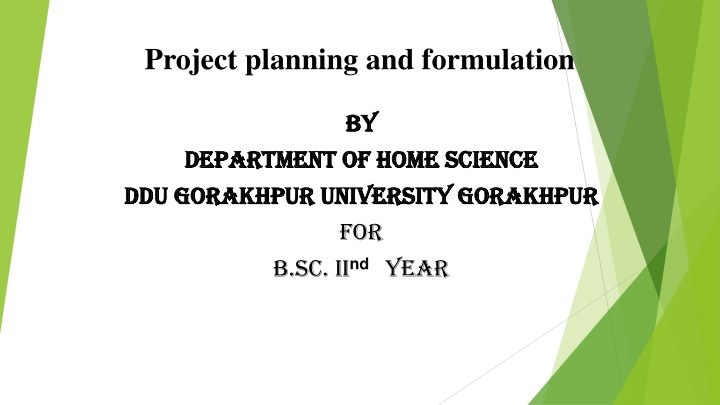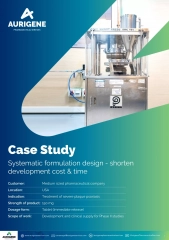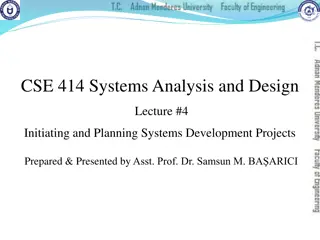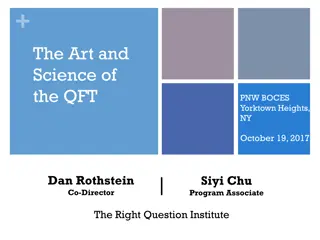Project Planning and Formulation in Home Science Department, Gorakhpur University B.Sc. IInd Year
Project planning and formulation are crucial aspects of any enterprise. This involves project identification, product selection, and understanding the meaning of a project. Projects can vary in size, nature, objectives, and complexity. Classification includes quantifiable and non-quantifiable projects, sectorial projects, and techno-economic projects with various characteristics and classifications.
Download Presentation

Please find below an Image/Link to download the presentation.
The content on the website is provided AS IS for your information and personal use only. It may not be sold, licensed, or shared on other websites without obtaining consent from the author.If you encounter any issues during the download, it is possible that the publisher has removed the file from their server.
You are allowed to download the files provided on this website for personal or commercial use, subject to the condition that they are used lawfully. All files are the property of their respective owners.
The content on the website is provided AS IS for your information and personal use only. It may not be sold, licensed, or shared on other websites without obtaining consent from the author.
E N D
Presentation Transcript
Project planning and formulation By By Department of Home Science Department of Home Science dDu Gorakhpur university Gorakhpur university gorakhpur For B.Sc. IIndYear dDu gorakhpur
Content :- Project identification and product selection
Meaning of project: We just mentioned that the very foundation of an enterprise is the project. Hence the success or failure of an enterprise largely depends upon the project. In simple words, a project is an idea or plan that is intended to be carried out. The dictionary meaning of a project is that it is a scheme, design, a proposal of something intended or devised to be achieved. Definition of Project A project typically has a distinct mission that it is designed to achieve and a clear termination point, the achievement of the mission.-Newman et.al As the whole complex of activities involved in using resources to gain benefits.-Gillinger defined as a scientifically evolved work plan devised to achieve a specific objective within a specified period of time Now, a project can be
Here it is also important to mention that while projects can differ in their size, nature, objectives, time duration and complexity, yet they partake of the following three basic attributes: 1. A course of action 2. Specific objectives 3. Definite time perspective Project Classification Project classification is a natural corollary to the study of project idea. Different authorities have classified projects differently. Following are the major classification of projects: 1. Quantifiable and Non-Quantifiable Projects. 2. Sectorial Projects 3. Techno-Economic Projects 4
Quantifiable and Non-Quantifiable projects for which a plausible quantitative assessment of benefits can be made are called Quantifiable projects . Projects concerned with industrial development, power generation, mineral development fall in this category. On the contrary, non-quantifiable projects are those in which a plausible quantitative assessment cannot be made, projects involving health education and defence are the examples of non- quantifiable projects Sectorial Projects : According to this classification, a project may fall in any one of the following sectors: Agriculture and allied sector Irrigation and power Sector Industry and mining Sector Transport and communication Sector Social Service Sector Miscellaneous sector
Techno-Economic Projects : This classification based on techno-economic characteristic fall in this category. Factor intensity-oriented Classification ,causation classification and Magnitude-oriented classification. Factor Intensity Oriented Classification: There projects are classified as capital intensive or labour intensive. If large investment is made in plant and machinery, the projects will be termed as capital intensive.. there are projects involving large number of human resources will be termed as labour Intensive Causation classification: There are projects classified demand based or raw material based. The very existence of demand for certain goods or service makes project Demand based.. The availability of certain raw material, Skills or other inputs makes the project Raw material based.
Magnitude oriented classification: There are the projects classified based on the size of investment involved in the projects. The projects are classified into Large Scale, Medium Scale or Small Scale projects. There are project selection process consist of Two main Steps: Project Identification Project Selection Project Identification : Idea generation : Selection process starts with the generation of a product idea. In order to select the Most promising project, the entrepreneur needs to generate a few ideas about the possible projects he/she can undertake.
Project idea can be discovered from various internal and external sources: I. Knowledge of potential customer needs II. Watching emerging trends in demands for certain products III. Scope for producing substitute product IV. Going though certain professional magazines catering to specific interest like electronic ,computer etc. V. Success stories of known entrepreneur or friend or relatives VI. Making visit to trade fairs and exhibitions displaying new products and services. VII.Meeting with government Agencies. VIII.Idea given by the knowledgeable person IX. A new product introduced by the competitor. X. This is called as the opportunity scanning and identification
Project Selection : Project selection starts from where project identification ends. After having some projects ideas A tool generally used for this purpose is, what is called in the managerial jargon, SWOT analysis The intending entrepreneur analysis his /her strength and weakness as well as opportunities /competitive advantages and threads/ challenges offered by each of the project ideas. Finally project selected to converted into enterprise. The process involved in selecting a project out of some projects is also described as the zeroing in process Above the process having the time interval for project identification and project Product Rawmaterial Market Labour Total Investment Ownership Location Working Capital
Product Selection Product Selection and Development Process are very complex process, which begins with idea generation and continues till commercialization. The process requires coordination between various departments. The process can be broken up into the following stages: 1. Exploration: New ideas are sought from the sales force, since that is the department which is in constant direct contact with customers. The analysis of customer needs also takes into account competitors products and services. New ideas are also generated from the consultants, shareholders, management employees, report on foreign markets and products, trade journals, R&D laboratories, other research, etc. However, technical feasibilities and market potential have to be kept in mind while examining new ideas. 2. Screening : While choosing the most effective ideas, guesswork or hunches are not reliable. To ensure a more scientific and less risky selection process, it is necessary to keep in mind all possible quantitative, as well as, qualitative information. Keeping in mind the organizational objectives and available facilities, the following must points be considered while selecting an idea
i. Market potentiality ii. Technical feasibility of the idea iii. Does the idea fall under any intellectual property rights or patent regulations? iv. Raw material supply position at present and in the future v. Do existing production facilities and resource availability remain suitable for commercialization of the new idea? vi. The level of investment required vii. Can the company generate this level of required investment from internal sources? viii. If borrowing is a must, cost of borrowing is a factor ix. Does profitability projection analysis suggest adequate return on investment? 3. Business Analysis: At this stage, technical and economic factors, like manhours, cash flow, inventory holding, etc., are analysed to evaluate commercial feasibility. This will ultimately facilitate the budgeting process. 4. Development: A working model is developed at this stage to evaluate the practicability of the new idea, by studying the acceptability of customers to the working model. Most companies use product life cycle model at this stage.
5. Testing: Redesigning of the working model into a production prototype and testing the market before bulk production. 6. Commercialization: At the final stage of a new product planning, decisions have to be made whether to make or buy components; production methods have to be developed; distribution networks activated and the new product has to integrate with the organization s normal activity, and satisfactory sales volume and profitability have to be achieved.
PROJECT A Project is a combination of human and non-human resources put together in a temporary organization to achieve a specified purpose. Project is a system involving co-coordination of a number of interrelated activities to achieve a specific objective. PROJECT CYCLE Project cycle has five stages (i) Identification: Identification could be from several sources: progressive farmers, entrepreneurs, technical experts, local leaders, bankers, mass media, extension agencies and national policies and plans. (ii) Formulation: Preparation of feasibility study is the first step in analysis. Advanced techniques of project planning like Programme Evaluation and Review Techniques (PERT) and Critical path Method (CPM) are used in capital intensive and complex project and those with longer gestation period (the period between starting of implementation of the project and income generation). (iii) Appraisal: After preparation, every project is appraised by an independent agency. This includes analysis and scrutiny of each and every aspect, details and assumptions made in the project. Generally banks have to undertake the appraisal of project before financing. The appraisal is also assigned to specialized agencies in case of complex project. The appraisal is conducted from several aspects like technical, financial, commercial, managerial, economic, distributive and environmental. Even within financial appraisal, there are various types of analysis. (iv) Implementation: Implementation basically means translating the proposal into a ground level project. The phases of the implementation are: a) Pre development phase: this involves getting registration, licenses and loan disbursement, b) Development phase: construction of structures and starting up of production, and c) Operational phase :starts with production and concludes when the economic life of the project comes to an end. (v) Monitoring and Evaluation: The final phase in project cycle is the monitoring and evaluation. Monitoring keeps track of the project, usually done by collecting certain performance indicators about the project to check whether the project is performing according to the plan, identifying problem areas and finding possible solutions.























